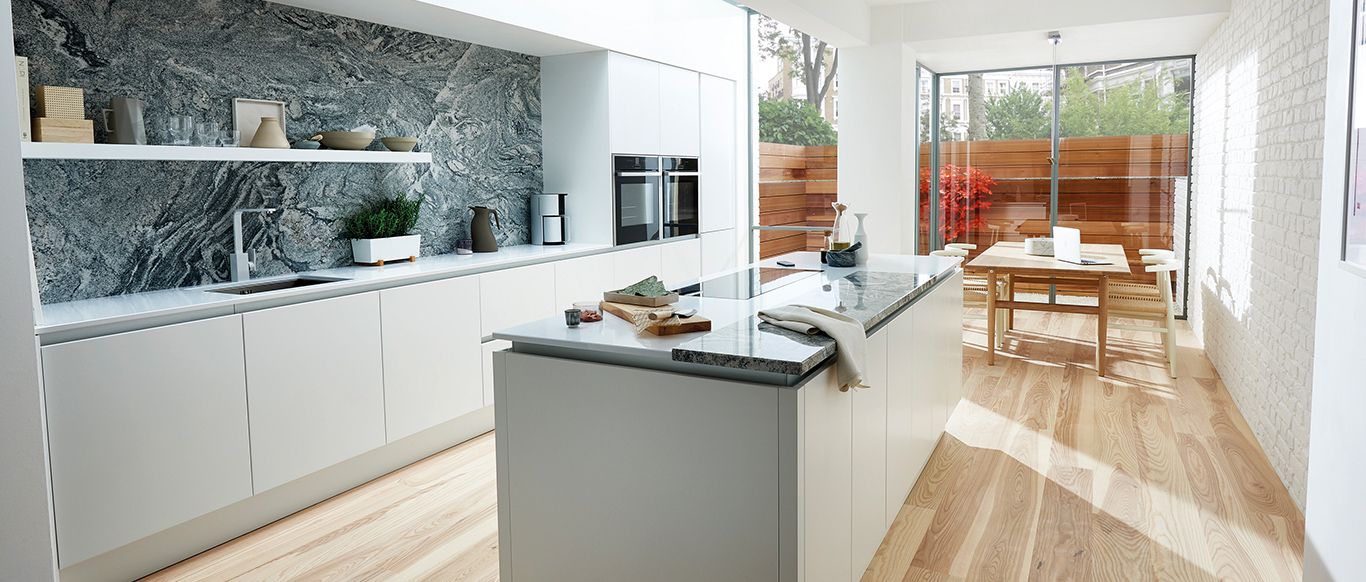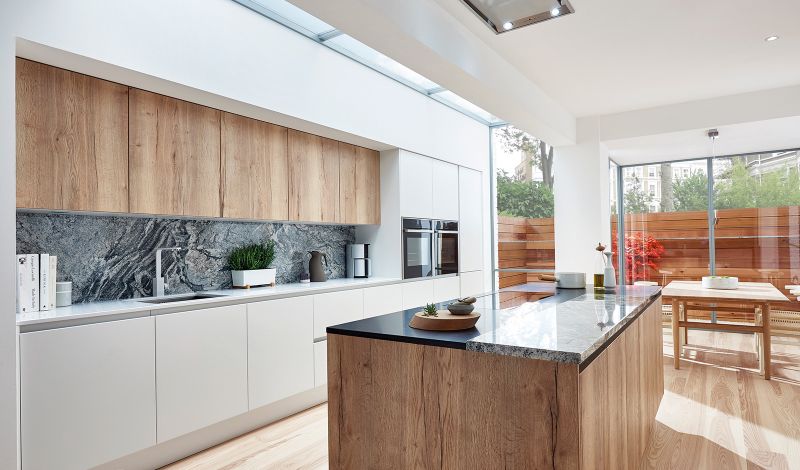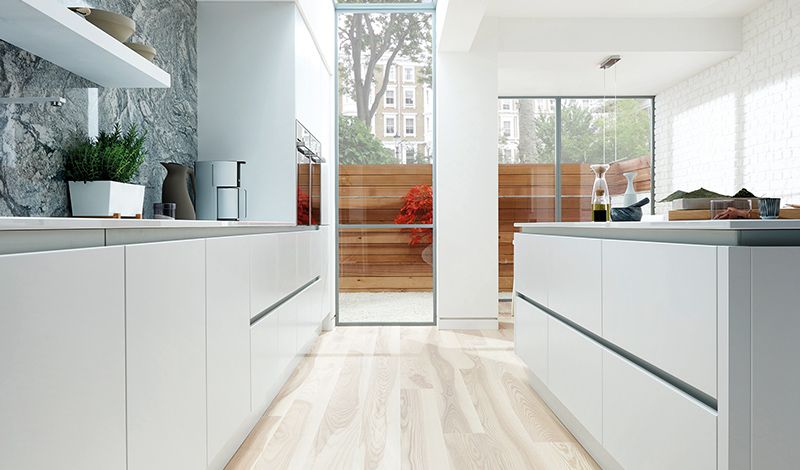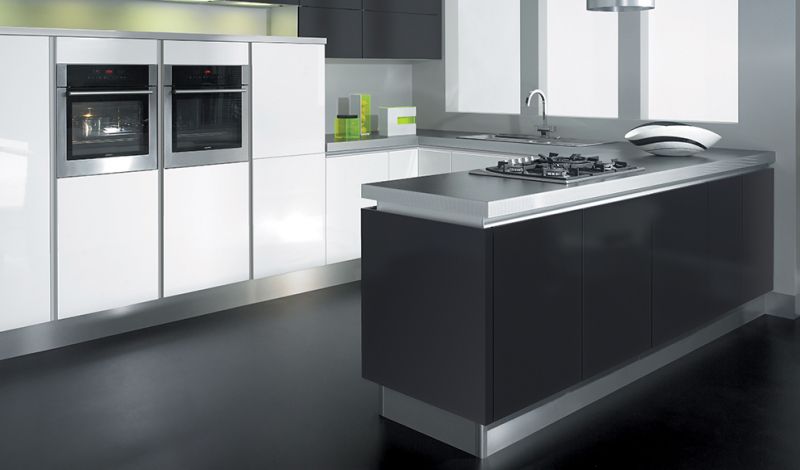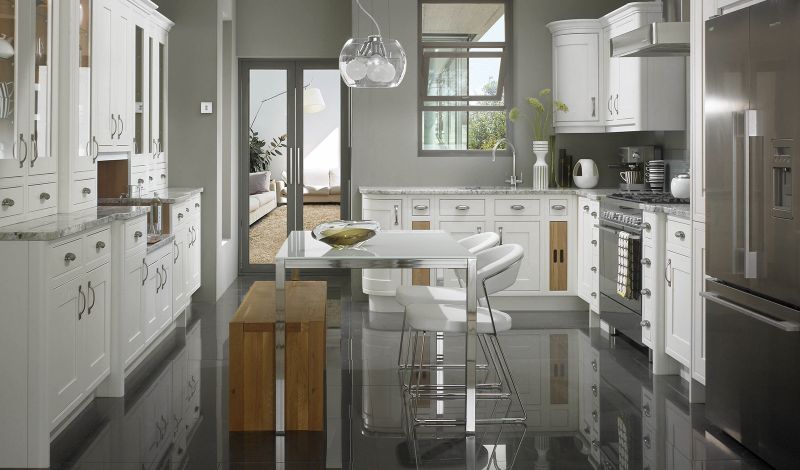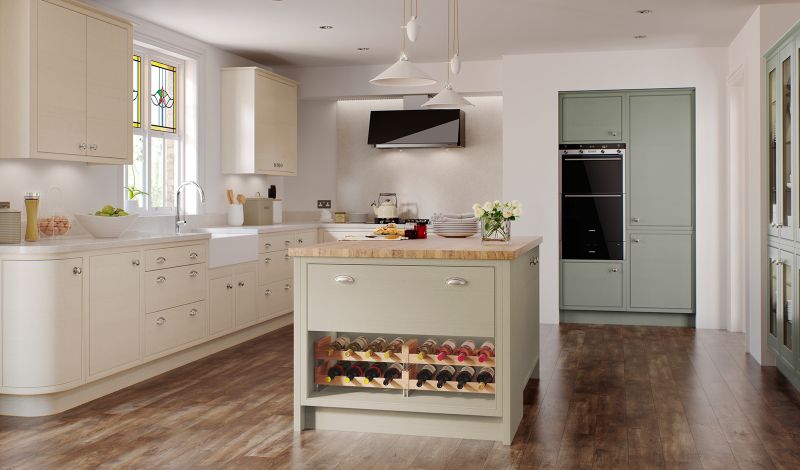Planning and Kitchen Layouts
There are many recognised types of kitchen layouts which have been utilised for many years, however over recent years the rule book has been thrown out as many customers are now looking for their kitchen to perform in many aspects in their home. Kitchen spaces have been opened up to create a room with multiple uses, from preparing meals to watching TV, doing homework and entertaining in one large multifunctional open space.
Galley kitchen
The simplest of layouts is the Galley kitchen for narrow rooms. Suitable for one or two people to use at the same time, single galleys are best planned with the sink in the middle of the line and built-in or built-under appliances to make the most of valuable space. There should be adequate “setting down” space beside or above the oven, plus an area of worktop between the hob and sink. Key to this type of layout is to consider ample space behind when opening cupboards and appliances.
Double Galley Kitchen
A double galley, with two facing lines of cupboards, is slightly more versatile with the possibility of the sink being positioned on the same side as the hob, this eliminates carrying hot items across the kitchen. There should be at least 1.2m between the two lines of units.
L shaped kitchen
An L-shaped kitchen has cupboards along two adjacent walls and benefits from a lack of through-traffic. The hob, fridge and sink should ideally be separated by areas of worktop to provide adequate preparation space. A corner cupboard gives the opportunity for maximising the full benefit of accessible storage by incorporating a cantilever or magic corner mechanism.
U shaped kitchen
U-shaped kitchens are an extremely effective design solution, utilising three full walls of a kitchen. The full range of modern appliances can all be installed with the appropriate workspace and preparation areas to ensure a practical design. In these styled kitchens a peninsular unit is a particularly effective way of creating additional storage and occasional eating areas.
Often used to separate cooking and dining areas or to create a breakfast bar arrangement, it is worth making cupboards accessible from either side for crockery and cutlery.
A peninsular unit that juts out into the centre of the room is a particularly effective way of creating additional storage and food preparation space and helps to separate and define the room space.
Island kitchen
The remaining standard design is the island layout, which is only suitable for larger rooms. Careful planning is needed to prevent wasted journeys around the island, but it can if correctly and ergonomically designed work very efficiently. With the use of today’s excellent downdraft & ceiling extraction, these layouts are becoming more and more popular as this Island kitchen layout lends itself for today’s requirements.

